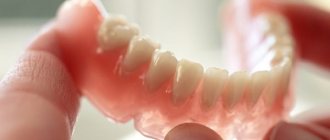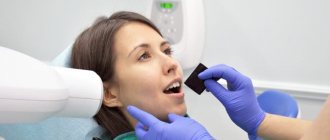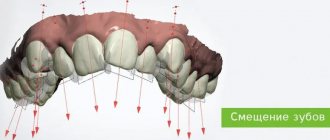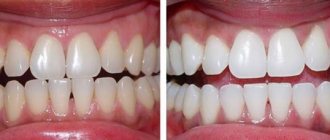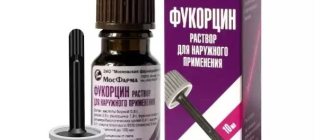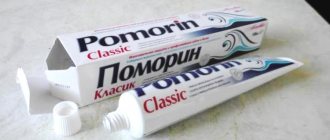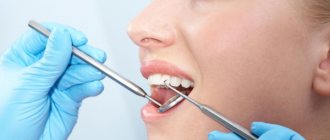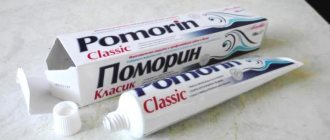Those who have just had braces installed may experience discomfort and pain in the first few days or weeks. This is a normal adaptation process, after which the discomfort will subside. Wax for braces helps minimize discomfort. We’ll tell you in the article how to use it and what to replace it with.
In this article
- Braces design
- Why do you need dental wax with braces?
- Composition of orthodontic wax
- How to use wax for braces?
- How can you choose wax for braces?
- What can replace wax for braces?
- How long to use dental wax?
Braces design
Today, bite correction with braces is carried out not only for teenagers, but also for adults. The effectiveness of braces has been proven by widespread practice of their use and excellent results in straightening teeth in patients of different ages. Correction of the bite occurs due to the special design of the bracket system, which consists of several elements. A small clasp is attached to each tooth with dental glue—the bracket itself.
The locks are united into a single design by a metal arc. It is made of metal with shape memory and when attached to uneven teeth it begins to put pressure on them. As a result of the pressure of the arc, the teeth gradually move in the desired direction. The design of the bracket system has many protruding elements that come into contact with the mucous membrane. This includes the arch itself (metal wire), and the clasps and ligatures that hold the arch in the braces.
Why do you need dental wax with braces?
Even the highest quality and modern braces can, to one degree or another, irritate the soft tissues of the oral cavity (mainly the tongue, the inside of the cheeks and lips). In the area of friction of the mucous membrane with clasps, ligatures and other protruding structural elements, microtraumas can first form, which then develop into ulcers. They not only cause pain, but are also a “gateway” for infection to penetrate deep into the body. Therefore, ulcers should not be allowed to form in places where braces rub against the mucous membrane. Dental wax helps solve this problem.
Its main purpose is to smooth out sharp corners, protruding edges and other elements of the braces system that injure soft tissues. Wax covers the clasps or metal arch, making them smoother and improving gliding.
It is recommended to use orthodontic wax immediately after installing braces, because it is the first days of the adaptation period that are the most difficult and uncomfortable for the patient. If you immediately apply dental wax to the sharp elements of the system, the process of getting used to it will be more comfortable.
Also, the use of orthodontic wax is justified at later stages of treatment, already in the process of constantly wearing braces. For example, you can use it to temporarily secure a loose lock or seal a broken edge of an arch so that it does not damage soft tissue. Sometimes patients find other uses for dental wax. In particular, it is used to “disguise” metal braces that are too noticeable and not the most aesthetically pleasing. It is applied to the lock or arch, after which they acquire a more matte color and lose their metallic shine. As a result of such manipulations, braces look much more aesthetically pleasing and are less conspicuous to others.
Indications for use
Wax is indicated for people who have braces installed to adapt the oral cavity to the structure. Experts recommend applying wax in small portions to the metal elements of the orthodontic onlay to prevent mechanical damage to soft tissues and mucous membranes.
Reference! At first, dentists recommend covering the entire structure with wax. During the process of habituation, you can install a protective layer only in those places where the metal comes into contact with delicate tissue or mucous membrane.
Composition of orthodontic wax
Now you know why wax is needed for braces, who should use this wax and how. Now we will talk about its composition. Since it will be in close contact with the oral cavity and mucous membranes, it is important that it does not contain substances harmful to health.
Orthodontic wax from different manufacturers may vary slightly in composition, but the main ingredients are usually the same:
- Wax and silicone. This is the basis, thanks to which the product becomes soft, plastic, and easily applied to braces.
- There is wax with aromatic or flavoring additives. thanks to which it acquires the taste of cherry, apple, etc.
- Often the composition includes substances that fight inflammation and promote tissue regeneration. As a rule, these are vitamin E and plant extracts.
- Allergy to dental wax is rare, only in the case of an individual reaction of the body. If, after using the product, the patient develops pronounced itching, redness, or swelling of the gums in the area where the wax was applied, you should immediately stop using it and consult a doctor.
It is important to understand that wax is not a drug. It does not treat any dental problems, it only helps to increase the comfort of wearing braces. Orthodontic wax is sold in convenient hermetically sealed packages. The substance itself is packaged in approximately 5 grams and presented in the form of wax sticks or plates, from which the required amount of wax can be separated and glued to the elements of the braces system. For a beginner, one package is usually enough for a week of daily use.
Are there any contraindications
The wax used in orthodontic practice has a completely safe composition, and therefore is characterized by a minimum number of contraindications. Many people are interested in the question of whether it is possible to sleep with it. Because it is non-toxic, it does not need to be washed off before bed if your braces become chafed while you sleep.
In some cases, the use of this product is not recommended, mainly due to increased sensitivity to individual components included in the composition. Otherwise, the risk of developing an allergic reaction will increase, which can be expressed in the form of itching, swelling, redness of soft tissues and the development of an inflammatory process1. If you observe something similar in yourself, stop using the composition and consult a dentist for advice on eliminating symptoms.
How to use wax for braces?
If you want wax to provide reliable protection of the mucous membrane from friction with braces, you need to know how to use it correctly. Detailed instructions are usually included with the orthodontic wax package. In this article we will describe the standard application scheme:
- Before applying, it is important to wash your hands thoroughly with soap and be sure to dry them.
- Wax is applied only to clean and dry elements of the bracket system. Therefore, before using protective wax, we carry out thorough oral hygiene: we clean the teeth and orthodontic structure with a V-shaped brush, a mono-beam brush, a brush, then we clean the interdental spaces with floss and complete the hygiene procedure with an irrigator. Now you need to dry the design parts, for which we use cotton swabs. Once your braces are clean and dry, you can apply wax to them.
- A small piece is carefully separated from the wax stick or plate, the size suitable for the structural element that requires processing. The wax is rolled between your fingers to soften it, a ball is formed from it and pressed onto the desired area of the braces system. Fix for a few seconds to secure.
- Gently spread the wax mass over the element with your finger so that it is evenly and completely covered with a protective film. Press down the wax again for a tighter fixation.
- From time to time, the wax must be reapplied because it is partially washed off by saliva and removed by the movement of the lips and jaws. Before eating, the wax film from the braces must be removed with a toothbrush or your finger.
Kinds
The assortment of orthodontic wax is represented by products with different flavoring additives (fruit, floral and others that replicate food aromas of natural origin), which determines the varieties.
For discerning consumers, a product is available that is odorless and tasteless (neutral).
Some manufacturers supplement the composition with substances that have the following effects:
- antibacterial;
- wound healing;
- anti-inflammatory.
Most often, wax is produced in the form of portioned strips, but there are also solid plates, from which, if necessary, you need to pinch off a piece and roll it into a ball, and then apply it to the braces. Products divided into portions are considered more convenient to use.
How can you choose wax for braces?
Good dental wax is produced by different manufacturers. Before purchasing, it is better to consult with your dentist which composition is best for you. In addition to the classic options, there are special waxes with an additional antibacterial component that are slowly dissolved by saliva, as well as compositions with increased density to provide maximum protection.
What can replace wax for braces?
If orthodontic wax is not on hand or the patient is allergic to it, the question may arise as to how to replace the wax for braces. Rinsing with decoctions of chamomile, mint, calendula and other medicinal plants will help protect the mucous membrane from inflammation and the formation of ulcers. But you need to take into account the individual reactions of the body and do not use herbs to which you are allergic. You can also consult with your orthodontist, who will recommend a mouthwash with similar anti-inflammatory effects.
Some dentists allow the use of regular paraffin or beeswax as an alternative to dental wax.
On online forums, users of braces often ask whether it is possible to temporarily replace dental wax with chewing gum. Dentists answer this question in the negative. Chewing gum should never be glued to braces; removing it completely will be extremely difficult. Particles of sticky gum remain on structural elements and can ruin the entire system, which will require its replacement. And these are additional costs plus a decrease in the effectiveness of treatment due to a forced break.
If, nevertheless, the patient unknowingly used chewing gum instead of dental wax, you can try to remove it yourself with a piece of ice. To do this, take a cube of frozen water and run it over the sticky gum. When exposed to cold, the gum will lose its sticky properties.
If there is no wax and wounds form on the oral mucosa, dentists recommend talking as little as possible for several days. This will reduce contact between braces and mucous membranes, prevent the formation of new ulcers, and speed up the healing of old ones. It is also not recommended to eat cold foods together with hot ones, because this increases the sensitivity of the mucous membrane, making it more susceptible to any external influences.
I’ll take off my braces, a couple of years will pass, and my teeth will return to their place... is this true?
But this is true - but from the practice of past years! Now, after removing braces, the dentition is secured using a special non-removable retainer apparatus; previously this was not always done - hence the accumulated complaints. Today, orthodontists are required to install such a device.
A retainer is a thin wire that is installed on the inside of the front teeth and prevents them from moving apart. And this is for the rest of your life, but you shouldn’t worry: the delay is imperceptible, those around you don’t see it, and if it breaks, it’s easy to fix—just don’t delay your visit to the doctor.
Another problem is more pressing: sometimes, after straightening the dentition, previously hidden aesthetic defects (for example, different lengths of teeth) become noticeable. In this case, you will really have to resort to restoration or buy expensive veneers.
Important! The orthodontist must notice such defects and warn the patient before starting treatment.
How long to use dental wax?
Wax should be used as needed. If the structure in the mouth causes discomfort, you can apply the composition at least every day for a month. If after two days of using wax the discomfort has passed, the mucous membrane has adapted to braces, and ulcers no longer form, you don’t have to apply wax. Practice shows that wax compositions are most often used by beginners during the period of getting used to braces. Those who have been wearing orthodontic structures for a long time often use wax when the arch breaks or the lock comes off.
In any case, it is advisable for a patient undergoing orthodontic treatment to have dental wax in his medicine cabinet. It will make the treatment process more comfortable and safe.

